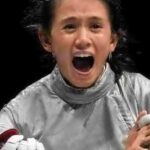PERSONAL FINANCE | ADVICE
Jamie Feldman, 35, lives in Brooklyn, New York, and is currently paying off nearly $20,000 in credit-card debt. She’s also the co-host of the “Debt Heads” podcast. After being laid off during the COVID-19
pandemic, she maxed out a credit card while spending to keep up with her social life.
“It was a lot of social commitments,” Feldman explains. “A lot of weddings, a lot of expensive dinners in New York with friends who were making more money than me, a lot of inability to say no to things even if I couldn’t afford them or didn’t want to do them.”
She thought of her debt as something she would deal with later — until later came, and she was in over her head in interest charges and minimum payments. Feldman made a decision to stop shopping and dining out for one month to see how it affected her budget.
People are also reading…
“Unsurprisingly, it made a huge difference,” she says. “It was the first time I was really looking at my finances and seeing where my money was going, what I was spending it on and what I was bringing in.”
Feldman isn’t the only one who’s swiped a credit card to keep up with the Joneses. According to a recent Bankrate survey, more than 2 in 5 (44%) credit-card holders carry a balance from month to month. And 38% of people say they would go into debt for a fun purchase — such as travel, dining out or live entertainment — this year, according to Bankrate’s Discretionary Spending Survey.
If you’re maxing out your budgets on “wants,” not “needs,” it might be time to look at your spending habits. Here are a few tricks for living within your means.
When Feldman gave up shopping and dining out, she found new ways to spend time with friends. “It forces creativity,” she says. “It’s very easy to get a drink or go to a restaurant with someone. It takes more imagination to say, ‘I want to spend time with you, but what can we do that doesn’t involve us spending a ton of money?'”
Feldman and her friends shared potlucks, went on walks and sought out other free and affordable things to do.
“Your friends are your friends no matter what,” she says. “They don’t like you because you spend money with them; they like you because they’re your friends.”
You can practice swapping in your spending, too. Instead of dinner and drinks out with friends, swap for a game night or movie in. Instead of buying expensive new clothes, swap for a clothing subscription like Nuuly or embrace thrifting new-to-you clothes. Or, instead of traveling to luxury destinations, swap for visiting a friend or trying a staycation.
While a single swap might not make a big difference, many swaps over time can. Swapping can also help you practice spending money only when you really want or need to, not just out of habit.
The deinfluencing trend has popped up on social media as an alternate voice to influencers. In a nutshell, deinfluencing is resisting the urge to buy products that are promoted by influencers or brands.
Deinfluencers debunk those pricey must-have items, reminding social media users that they may not really need that makeup, hair product or closet organizer. Learning more about this trend can help you to better understand how social media shapes your idea of the status quo. You can follow deinfluencers and #deinfluencing — or simply unfollow profiles that set unattainable standards — to reframe how you think about what you have.
Alternatively, “not being on social media is the way for me to deinfluence,” Feldman says.
If you’re not already keeping a budget, it’s time to make one. A monthly budget can help you track expenses and set spending limits so you know where your money’s going. Consider including at least some room in your budget for discretionary spending. Enjoying the pleasures you can afford may help you avoid spending on things you can’t afford.
“Budgeting is about a reprioritization of values; it’s not about deprivation,” Feldman says.
For example, she chooses not to eat at restaurants often, but she does like to get her nails done once a month.
“It becomes like a puzzle,” she says. “What can I cut out so I can do the things I care about?”
It’s also important to set a debt-repayment plan if you have credit-card debt. A balance-transfer card buys you time to pay off a chunk of debt without accruing additional interest during the intro period. Just make sure you have a plan in place for when the APR kicks in.





